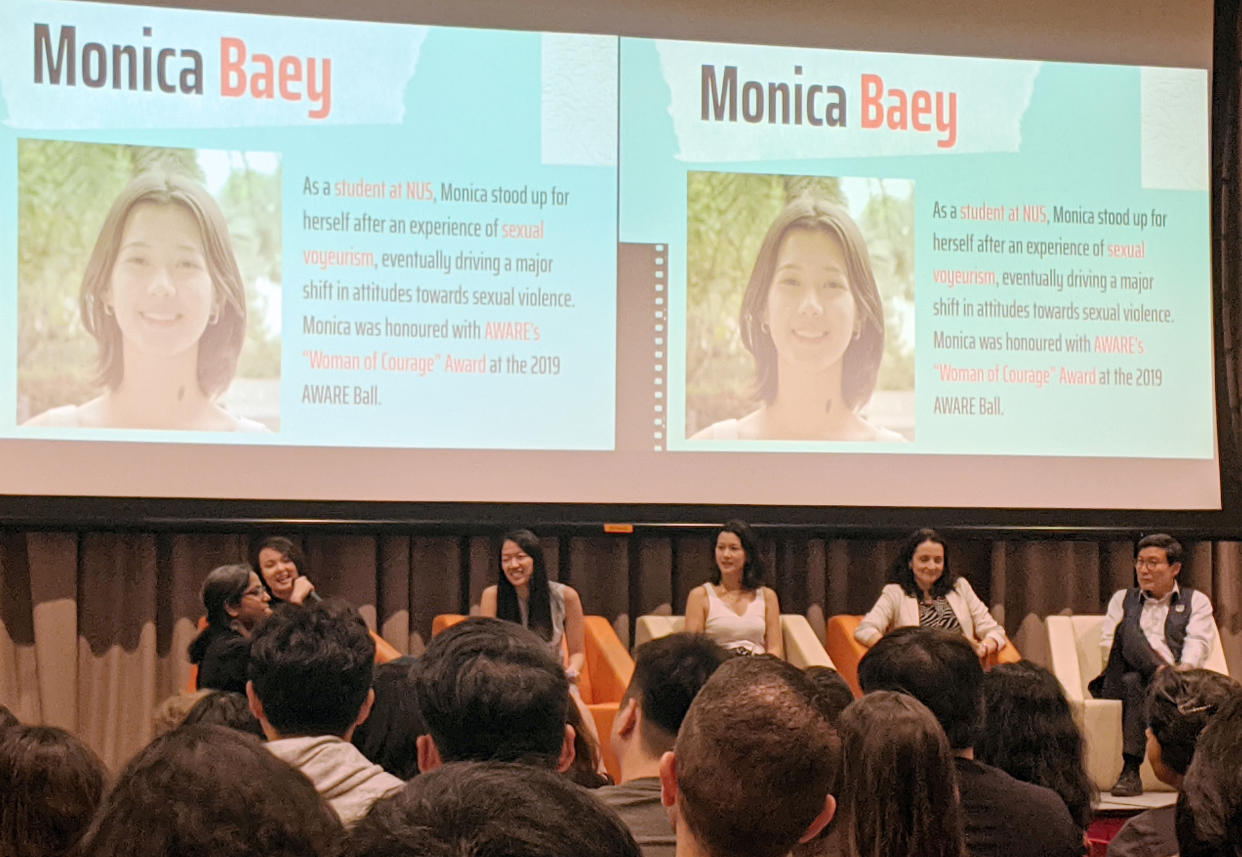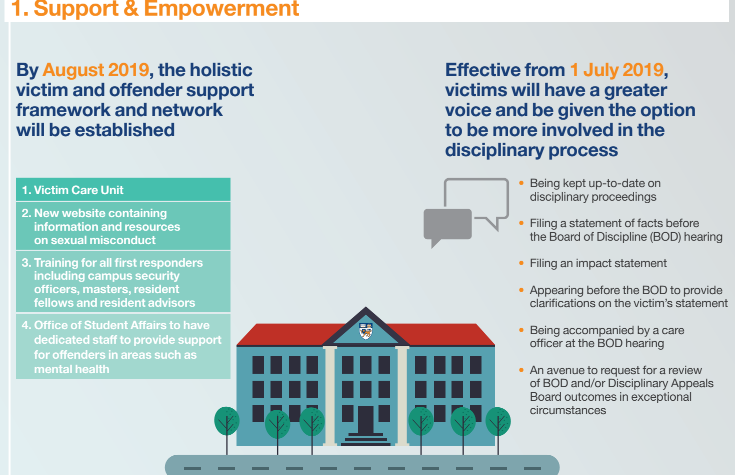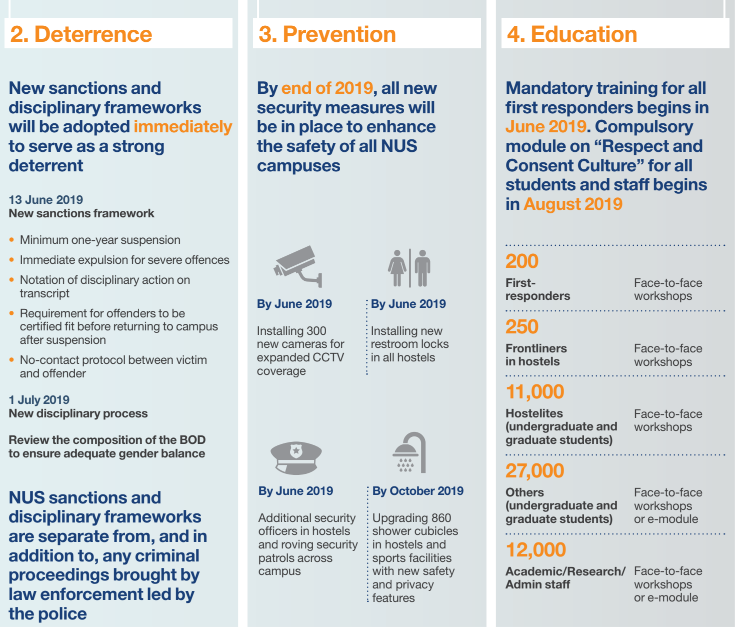Sharp rise seen in 'tech-facilitated sexual violence': AWARE

SINGAPORE — In today’s digitally connected world, sexual violence has evolved a new form, as perpetrators use social media or dating apps to distribute sexually explicit images and videos of their victims, who often are their former intimate partners.
Between 2016 and last year, the Association of Women for Action and Research (AWARE) saw an almost three-fold increase in “technology-facilitated sexual violence”, said Anisha Joseph, the head of the non-profit organisation’s Sexual Assault Care Centre (SACC), on Monday (25 November) night.
She was speaking at an event, Taking Ctrl, Finding Alt, which was held at the Lifelong Learning Institute in Paya Lebar.
The gathering, which saw about 150 attendees, simultaneously marked the group’s recognition of the International Day for the Elimination of Violence Against Women, the one-year anniversary of AWARE’s Aim For Zero campaign against sexual violence and the organisation’s 34th anniversary.
Technology’s dark side
Last year, AWARE’s SACC saw 124 such tech-facilitated sexual assault cases, including those where perpetrators had sent explicit messages via online platforms to coerce sex from victims. This compares with 99 such cases seen in 2017 and 46 in 2016.
Out of the 124 cases reported by victims last year, more than half involved image-based sexual abuse (IBSA), up from 30 such cases in 2016.
Cases of this type include revenge porn, upskirting, voyeurism and “sextortion”, which covers attempts to extort or coerce using nude images or video footage.
Almost half of the IBSA cases seen by the SACC across 2016 to 2018 involved offences committed by an intimate partner, with most of the rest having been perpetrated by someone at the victim’s workplace.
“It is a case where women are disproportionately affected...The perpetrator profile cuts across age, class, educational background and race,” said Joseph.
Referring to recent high-profile cases in Singapore, including one involving the SG Nasi Lemak Telegram chat group that circulated obscene images and voyeuristic videos, she noted, “We believe that public awareness of this issue – and public urgency to curb it – has never been higher...We have not moved to a place where we want to be.”
Despite the new types of sexual offences that have emerged, technology is not the villain, said Joseph.
“It is not the cause of sexual violence, but a medium through which violence is facilitated by perpetrators – we see it ‘folded into’ pre-existing relationships of violence, harm, and harassment,” she explained.
“New factors – such as the widespread availability of recording technology, and our 24/7 channels of communication – make these actions all the more pervasive and damaging today.”
Abuses not reported out of fear
Of the cases seen by the SACC between 2016 and 2018, 50 per cent of victims of IBSA report their cases to the police.
Joseph noted that the hesitation of some victims in making police reports stems from the fears of not being believed or that reporting will not bring about any real improvement in their situation, along with worries over the potential retaliation from the perpetrators.
Other issues victims face include limitations in their ability to contain the spread of images once they are uploaded, said panelists at the event.
A big “myth” that still needs to be debunked is that cases involving technology do not carry the same weight as physical sexual assault, pointed out National University of Singapore (NUS) undergraduate Monica Baey.
“People perceive that somehow it isn't as serious, and that's also why it has been going on for so long without people talking about it,” the 23-year-old added.
In April, Baey had shared over social media her experience of catching a male student filming her showering at her hostel. She also criticised the seemingly light punishment imposed upon the perpetrator.
“There was no physical touch but I know deep down inside, something has happened to me,” said Baey, referring to her case.
She was given AWARE’s Woman of Courage award earlier this month for speaking up about the incident, which led to the university introducing tougher penalties for sexual offenders, among other measures.


Addressing legal gaps
While major legislative changes implemented this year – such as the introduction of enhanced penalties for voyeuristic offences and expedited protection orders against potential perpetrators – serve to help victims, there are limitations within the law, said fellow panelist and SACC’s volunteer lawyer Priscilla Chia.
For instance, given the nature of technology, crimes of such a nature can happen outside of local jurisdiction and, therefore, leave the aggressor facing no punishment.
“I think that sums it up really well that while there are changes, there are still gaps that we need to look at,” said Chia. To address such shortcomings, Chia suggested forming an international body for victims of IBSA.
Noting a lack of public awareness and the existence of a “culture of fear” in Singapore, she also called for more local support groups to be formed for sexual assault victims.
Role of social media companies
With the online dissemination of non-consensual intimate photos and videos also being an issue, companies like Facebook also play a part in regulating the spread of such content.
At Facebook, digital fingerprinting helps prevent the spread of non-consensual intimate images, said its Head of Safety Policy (APAC) Amber Hawkes.
Once such content is verified, it is digitally fingerprinted to prevent the material from being shared over various Facebook platforms, including Instagram and Messenger.
“At Facebook, we take a comprehensive approach to making our platform a safer place for women, including writing clear policies and developing cutting-edge technology to prevent the spread of non-consensually shared intimate images and to protect women from harassment,” she added.
Sourcing new ideas
At Monday’s event, AWARE also launched a contest inviting members of the public to submit their ideas for projects to combat IBSA.
Held in conjunction with the High Commission of Canada, winning projects will receive a "kickstarter" sum of up to $6,000, as well as development support for a pilot phase over six months next year. Those interested in taking part have until 7 February 2020 to submit their proposals via AWARE’s website.
Related stories:
Man who spied on woman in Pull&Bear changing room jailed
Parliament: Maximum jail term for making voyeuristic recording increased to 2 years
Voyeurism is a growing concern in Singapore: Ong Ye Kung
56 sexual misconduct cases handled by autonomous universities in past 3 years: Ong Ye Kung


